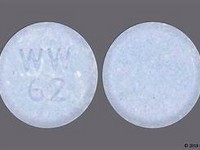Lisinopril
CLINICAL USE
Angiotensin-converting enzyme inhibitor:Hypertension, heart failure, following myocardial infarction in haemodynamically stable patientsDiabetic nephropathy
DOSE IN NORMAL RENAL FUNCTION
2.5–80 mg dailyAfter a myocardial infarction: 2.5–10 mg daily
PHARMACOKINETICS
DOSE IN RENAL IMPAIRMENT
GFR (mL/MIN)
DOSE IN PATIENTS UNDERGOING RENAL REPLACEMENT THERAPIES
IMPORTANT DRUG INTERACTIONS
Potentially hazardous interactions with other drugs
ADMINISTRATION
Reconstition
–
Route
Oral
Rate of Administration
–
Comments
–
OTHER INFORMATION
Close monitoring of renal function during therapy is necessary in those with renal insufficiencyRenal failure has been reported in association with ACE inhibitors and has been mainly in patients with severe congestive heart failure, renal artery stenosis, and post renal transplantHigh incidence of anaphylactoid reactions has been reported in patients dialysed with high-flux polyacrylonitrile membranes and treated concomitantly with an ACE inhibitor – this combination should therefore be avoidedHyperkalaemia and other side effects are more common in patients with impaired renal function.
